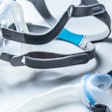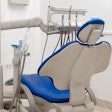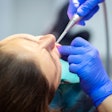
With an eye toward encouraging innovation, providing regulatory predictability, and ensuring patient safety, the FDA's Center for Devices and Radiological Health (CDRH) has issued two preliminary reports offering suggestions on how to improve the 510(k) review process for medical devices.
One report focuses on ways to strengthen and clarify the 510(k) process for devices that do not need to undergo a full premarket approval (PMA) review, while the second report evaluates CDRH's use of science in decision-making. The assessment aims to help CDRH adapt to new scientific information, while maintaining regulatory predictability necessary for innovation, according to the agency.
— Stephen Ubl, AdvaMed
president and CEO
"CDRH is seeking to strike the right balance between the ability to adapt its approach as new science emerges and to provide predictable regulatory pathways," the agency said in a release.
Two staff committees reviewed input from public meetings, open dockets, data analyses, and input from CDRH staff over the course of several months to prepare the complementary evaluations, according to the FDA.
Innovation
In a bid to foster innovation, the 510(k) report recommends major improvements to the regulatory pathway for lower-risk novel devices that can't be cleared through the 510(k) process but do not warrant the more rigorous PMA review required for higher-risk devices. Recommendations for major reforms to this de novo classification process include process streamlining and clarification of CDRH's expectations for submissions that receive this review.
The science report suggests that CDRH make better use of external scientific experts by developing a Web-based network of experts using social media technology. This network would aid CDRH staff in leveraging outside knowledge without serving in an advisory capacity, according to the FDA.
Regulatory predictability
In hopes of enhancing regulatory predictability, the 510(k) report recommends that CDRH develop a guidance document that defines a subset of moderate-risk (class II) devices, called class IIb, for which clinical or manufacturing data would typically be necessary to support a substantial equivalence determination. This guidance document would help clarify what information should be included in 510(k) submissions and also help CDRH's review staff obtain the evidence necessary to make well-supported decisions without as much need for follow-up requests for information, according to the FDA.
With a similar goal, the science report recommends the use of a standardized "notice to industry" letter that would generally be issued as a "level 1 -- Immediately in Effect" guidance document to quickly communicate when CDRH has changed its premarket regulatory expectations due to scientific information that has emerged about a certain device type.
Patient safety
In terms of patient safety goals, the 510(k) report recommends that CDRH consider revising regulations to explicitly require that submitters provide a summary of all scientific information known or that the submitter should reasonably know regarding the safety and effectiveness of the device being reviewed. This summary would help CDRH review staff make decisions more efficiently and potentially avoid extensive follow-up inquiries and questions, according to the FDA.
The 510(k) report also recommends that CDRH develop a guidance document that clarifies when a device should not be used as a predicate device, such as when it has been removed from the market due to safety concerns. It also recommends that CDRH consider issuing a regulation that would clarify the circumstances under which it would exercise its authority to rescind a 510(k) clearance to remove an unsafe device from the market, preclude its use as a predicate, and also consider whether additional authority is needed, according to the agency.
In addition, both the 510(k) and science reports recommend that CDRH build upon public databases to include meaningful, up-to-date information that supports good decision-making and promotes the safe use of devices. This could be accomplished by adding FDA review decisions, current labeling, and photos to the current 510(k) database, according to the FDA.
The science report also advises CDRH to build upon the existing transparency website to provide more information on how devices are regulated.
The reports can be found here.
The Advanced Medical Technology Association (AdvaMed) said in a statement that it's reviewing the FDA's recommendations. The group said it was pleased to note on first reading, though, that the 510(k) report incorporates AdvaMed recommendations on targeting special requirements for a small subset of class II 510(k) devices, said Stephen Ubl, AdvaMed president and CEO.
In addition, the proposals to increase the consistency and predictability of the process by greater reviewer training and oversight are very promising, and, if successful, they will address one of the most troublesome issues companies currently face in bringing new products to market, Ubl said.
However, there are more than 70 proposed changes that, when taken together, could result in a significant disruption to a system that has served patients well for more than 30 years, according to Ubl.
"These range from potential changes in the fundamental basis for product clearance to publicly disclosing design schematics in a database where foreign competitors would have access to them," he said in a statement. "We believe changes should be targeted, have a corresponding public health benefit, and not undermine a system that has a remarkable safety record."
Ubl cited two independent reports submitted last week to the Institute of Medicine that provided evidence of the safety record of the 510(k) process.
One study, from University of Minnesota Law School professor Ralph Hall, found that less than 0.2% of the approximately 50,000 510(k)-cleared products on the market have been the subject of an FDA class I recall, while a similar study by William Maisel, M.D., of Beth Israel Deaconess Medical Center in Boston also found an extremely low recall rate, according to Ubl.
Ubl said AdvaMed is looking forward to working collaboratively with FDA Commissioner Margaret Hamburg, M.D., and CDRH Director Jeffrey Shuren, M.D., as they seek to improve the 510(k) program.
Another industry trade group, the Medical Imaging and Technology Alliance (MITA) of Rosslyn, VA, said the FDA proposals require further study, but MITA believes that a number of the proposals have the potential to make the clearance process more rational. However, some "have the potential to hinder access to life-saving technologies," it noted.
Copyright © 2010 DrBicuspid.com


















